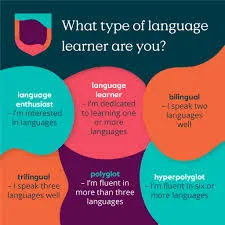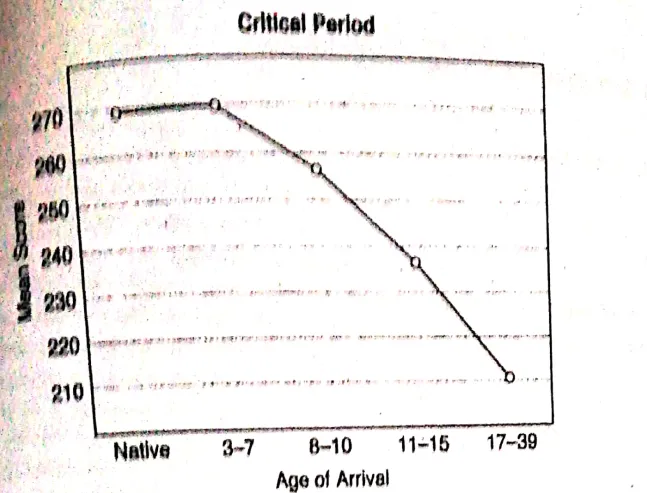Second language acquisition by John W. Schwieter (How Child acquire second language acquisition through some particular sequence)?
- Musleh Saadi

- Jul 27, 2024
- 8 min read
Updated: Jun 23
econd Language Acquisition (SLA): Second Language Acquisition (SLA) refers to the process by which individuals learn and acquire proficiency in a language that is not their native or first language. It involves the development of various linguistic skills, including speaking, listening, reading, and writing, in the target language.
Similarities and Differences from First Language Acquisition (FLA):
Similarities: Both SLA and FLA involve the acquisition of language skills through exposure to linguistic input, interaction with speakers of the language, and practice in communicative contexts. Both processes follow a pattern of development, with learners progressing through stages of increasing proficiency.
Differences: SLA typically begins after the completion or near-completion of FLA, often occurring in later childhood, adolescence, or adulthood. Unlike FLA, which is primarily driven by implicit learning mechanisms, SLA may involve explicit learning strategies and conscious effort. Additionally, learners’ prior linguistic knowledge and experiences in their first language can influence the SLA process.
Ultimate Attainment: Ultimate attainment refers to the highest level of language proficiency that individuals achieve in their second language. It varies among learners and can be influenced by factors such as age of acquisition, amount of exposure to the language, quality of instruction, motivation, and individual differences in cognitive abilities.
Fossilization: Fossilization occurs when learners reach a plateau in their language proficiency despite continued exposure and practice. It refers to the persistence of non-native linguistic features or errors in learners’ speech or writing, even after years of language learning. Fossilization can result from various factors, including limited input, lack of opportunities for interaction, ineffective learning strategies, and motivational factors.
Interlanguage: Interlanguage refers to the transitional linguistic system that learners develop as they progress toward native-like proficiency in a second language. It is characterized by a combination of features from both the learner’s first language and the target language, as well as by developmental errors and simplifications. Interlanguage reflects learners’ evolving understanding of the target language and serves as a temporary stage in the process of SLA.
Linguistic Development of a Second Language:
Phonological Development: Phonological development in SLA involves the acquisition of the sound system of the target language. The Markedness Differential Hypothesis suggests that learners may have difficulty acquiring phonological contrasts that are marked or less frequent in the target language. Voicing contrast, for example, is a phonological feature that may pose challenges for learners, especially if it does not exist in their first language.
Morphological Development: Morphological development in SLA pertains to the acquisition of word formation rules and morphological structures. The Natural Order Hypothesis posits that learners acquire morphemes in a predictable sequence based on their complexity and frequency in the language. Interfaces with morphology involve the interaction between morphological processes and other linguistic components, such as syntax and semantics.
Syntactic Development: Syntactic development in SLA involves the acquisition of grammatical structures and sentence patterns. Markedness and the Accessibility Hierarchy suggest that certain syntactic structures are acquired earlier and more easily than others based on their markedness and complexity. Generative linguistics and universal principles, such as Principles and Parameters theory and the Null-Subject Parameter, provide frameworks for understanding the underlying structures and constraints of human language and their role in SLA.

Certainly! Here’s an explanation of each factor affecting second language acquisition:
1. First Language Influence: The first language (L1) can significantly influence second language acquisition (SLA). Learners often transfer linguistic features, such as grammar, pronunciation, and vocabulary, from their L1 to the target language. This can both facilitate and hinder SLA, depending on the similarities and differences between the two languages.
2. Age and the Critical Period Hypothesis: Age is a crucial factor in SLA. According to the Critical Period Hypothesis, there is a biologically determined window of opportunity during which language acquisition is optimal. This period is thought to extend from early childhood to puberty. After this critical period, individuals may experience greater difficulty in attaining native-like proficiency in a second language.
3. Gender: Gender may influence SLA, although the extent of its impact is debated. Some studies suggest that females tend to outperform males in certain language tasks, while others find no significant gender differences in SLA outcomes. Factors such as motivation, learning strategies, and socialization patterns may contribute to gender-related variations in SLA.

4. Learning Styles: Learning styles refer to individual preferences and tendencies in how learners perceive, process, and organize information. Field-dependent learners rely more on contextual cues and prefer group-based activities, while field-independent learners are more analytical and prefer independent learning tasks. Understanding learners’ preferred styles can inform instructional approaches and enhance SLA outcomes.
5. Aptitude and Working Memory: Aptitude refers to individuals’ innate ability or talent for learning languages. It encompasses cognitive factors such as memory, analytical skills, and problem-solving abilities. Working memory, which involves the temporary storage and manipulation of information, is particularly relevant to language learning tasks that require processing and retaining linguistic input.
6. Context of Learning: The context in which SLA takes place can significantly impact learning outcomes. Factors such as immersion in the target language environment, exposure to authentic language use, quality of instruction, availability of resources, and social support networks all play roles in shaping learners’ language proficiency and fluency.
7. Personality Traits and Affective States: Personality traits, such as extroversion, openness to experience, and tolerance for ambiguity, may influence learners’ attitudes, motivation, and willingness to engage in language learning activities. Affective states, including anxiety, self-efficacy, attitude towards the target language, and motivation levels, can affect learners’ language learning experiences and outcomes.
8. Attitudes and Beliefs towards the Target Language: Learners’ attitudes and beliefs towards the target language and its speakers can impact their motivation, engagement, and persistence in language learning. Positive attitudes towards the language and its cultural context are associated with higher levels of motivation and investment in SLA.
9. Motivation and Investment in Language Learning: Motivation plays a central role in SLA, driving learners’ efforts, persistence, and engagement in language learning activities. Motivation can be categorized into instrumental motivation (desire to achieve practical goals) and integrative motivation (interest in and identification with the target language and its speakers). Learners who are intrinsically motivated and perceive the value of language learning are more likely to achieve higher levels of proficiency and fluency.
Second Language Teaching and Learning: Different pedagogical approaches are employed in SLA, including:
Communicative Language Teaching (CLT), which focuses on developing learners’ communicative competence through meaningful interaction and task-based activities.
Form-focused instruction, which emphasizes the explicit teaching of grammatical forms and structures.
Task-based Language Teaching, uses tasks to motivate learners and provide opportunities for practicing language skills within realistic contexts.
Processing instruction aims to improve learners’ processing skills for specific linguistic structures.
Processing Instruction:
Processing Instruction is an approach to second language teaching that focuses on the explicit instruction of grammatical structures and their underlying processing strategies. Developed by Bill VanPatten, this instructional method aims to enhance learners’ comprehension and production of target language structures by providing explicit instruction on how to process and understand them. Processing Instruction typically involves a combination of structured input activities, guided practice, and corrective feedback to help learners develop accurate and efficient processing strategies for the target structures.
Different Types of Language Instruction Programs:
1. Core Instruction Programs:Core instruction programs refer to standard language learning curricula and methodologies used in formal educational settings. These programs typically follow a structured sequence of language instruction and are designed to develop learners’ proficiency in the target language over time. Core instruction programs may vary in their approach, materials, and instructional methods, but they generally aim to provide comprehensive language instruction that covers various linguistic skills (e.g., listening, speaking, reading, writing) and linguistic components (e.g., vocabulary, grammar, pronunciation).
2. Heritage Language Maintenance Programs: Heritage language maintenance programs are designed to support the development and preservation of heritage languages among individuals who have a cultural or familial connection to a specific language but may have limited proficiency in it. These programs aim to foster language proficiency, cultural identity, and heritage language literacy among heritage language speakers through formal instruction, cultural activities, community events, and language immersion experiences.
3. Submersion Programs: Submersion programs, also known as sink-or-swim or full immersion programs, immerse learners in the target language environment with minimal or no instruction in their first language. These programs aim to promote rapid language acquisition and proficiency by exposing learners to the target language in authentic communicative contexts. Submersion programs are often used in language immersion schools or language immersion camps where learners are fully immersed in the target language environment for extended periods.
4. Immersion Programs:** Immersion programs provide intensive language instruction in the target language while integrating content-based instruction in other academic subjects. These programs aim to develop bilingualism, biliteracy, and cross-cultural competence by immersing learners in a rich language and content learning environment. Immersion programs may be partial immersion (where some subjects are taught in the target language and others in the first language) or full immersion (where all subjects are taught in the target language). They are often used in bilingual education settings or international schools where students come from diverse linguistic and cultural backgrounds.
Approaches to Studying Second Language Acquisition: Approaches to studying SLA include:
The Monitor Model, which includes hypotheses such as the Input Hypothesis, the Output Hypothesis, and the Interaction Hypothesis.
Sociocultural theory, which emphasizes the role of social and cultural factors in SLA.
Universal Grammar, which posits the existence of innate language structures and principles that guide language acquisition.
Cognitive approaches, such as the competition model and Processability theory, which focus on cognitive processes involved in language learning.
How does Second language acquisition differ from L1 (First language acquisition)?
Second language acquisition (SLA) differs from first language acquisition (FLA) in several key ways:
1. Timing: FLA begins at birth and progresses rapidly during the early years of life, while SLA typically starts later, often during childhood or adulthood, after FLA is largely complete. This timing difference can influence the methods and strategies used for language learning.
2. Input: In FLA, children are exposed to consistent and naturalistic language input from caregivers and the surrounding environment. In contrast, SLA learners may encounter language input that is more varied in quality, quantity, and context. They may rely on formal instruction, immersion programs, self-study materials, or interactions with speakers of the target language.
3. Cognitive Development: FLA occurs during critical periods of cognitive development, when the brain is highly plastic and receptive to language input. SLA often occurs after these critical periods, and learners may need to rely more on cognitive resources such as memory, attention, and problem-solving skills to acquire a new language.
4. Interference from L1: SLA learners bring their knowledge of their first language (L1) to the process of acquiring a second language. While this can be beneficial in some respects, such as facilitating vocabulary acquisition or understanding grammatical concepts, it can also lead to interference or transfer errors, where features of the L1 influence the production or comprehension of the target language.
5. Motivation and Attitude: FLA is typically driven by intrinsic motivation and a natural desire to communicate and interact with others. In contrast, SLA may involve a combination of intrinsic and extrinsic motivation, influenced by factors such as personal interest, educational or career goals, social integration, or cultural identity.
6. Social Context: FLA occurs within the family and social environment, where children have ample opportunities for interaction and feedback from caregivers and peers. SLA may involve interaction with speakers of the target language in various contexts, such as classrooms, workplaces, communities, or online forums.
7. Explicit Learning Strategies: While FLA largely relies on implicit learning mechanisms, SLA often involves more explicit learning strategies, such as vocabulary drills, grammar exercises, language textbooks, or formal instruction. SLA learners may consciously analyze language rules, practice language skills, and seek feedback to improve their proficiency.
8. Affective Factors: SLA may be influenced by affective factors such as anxiety, self-confidence, motivation, and cultural attitudes towards the target language and its speakers. These factors can impact learners’ willingness to engage in language learning activities, their persistence in the face of challenges, and their overall success in acquiring the language.
Citations
[4] https://www.researchgate.net/publication/322708295_FACTORS_INFLUENCING_SECOND_LANGUAGE_ACQUISITION
[6] https://mangolanguages.com/resources-articles/4-key-differences-between-first-and-second-language-learning-2/[7] https://files.eric.ed.gov/fulltext/EJ1082388.pdf[8] https://www.basic-concept.com/c/difference-between-first-language-second-language[9] https://www.colorincolorado.org/article/language-acquisition-overview[10] https://youtube.com/watch?v=l5j2XfyCXH4
[11] https://www2.ed.gov/rschstat/eval/title-iii/language-instruction-ed-programs-report.pdf[12] https://uw.pressbooks.pub/eedumll/chapter/5-3-language-instruction-and-program-models/[13] https://www.education.pa.gov/Documents/Teachers-Administrators/Curriculum/ESL/Classifying%20Language%20Instruction%20Education%20Programs.pdf[14] https://www.northwestcareercollege.edu/blog/different-language-teaching-methods/[15] https://iris.peabody.vanderbilt.edu/module/ell/cresource/q1/p02/



👍